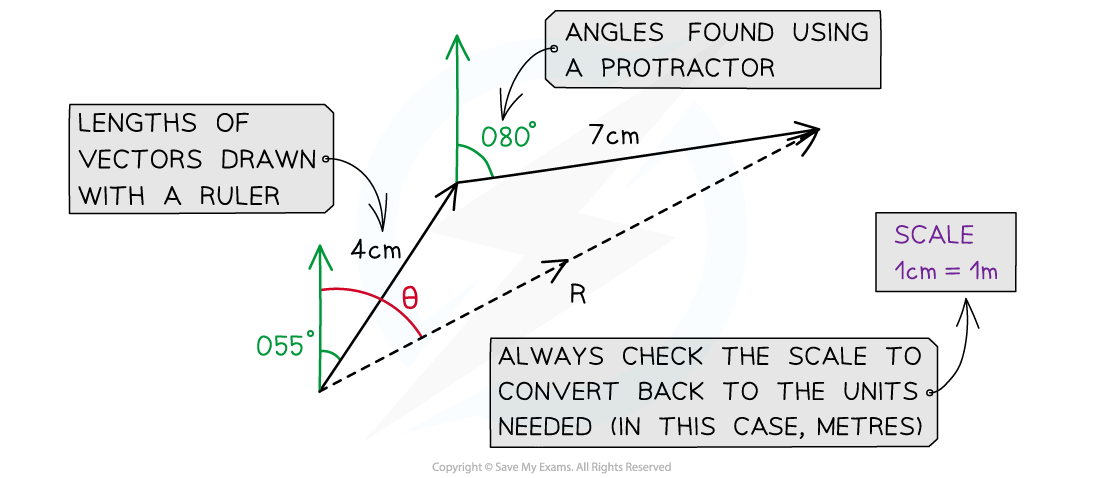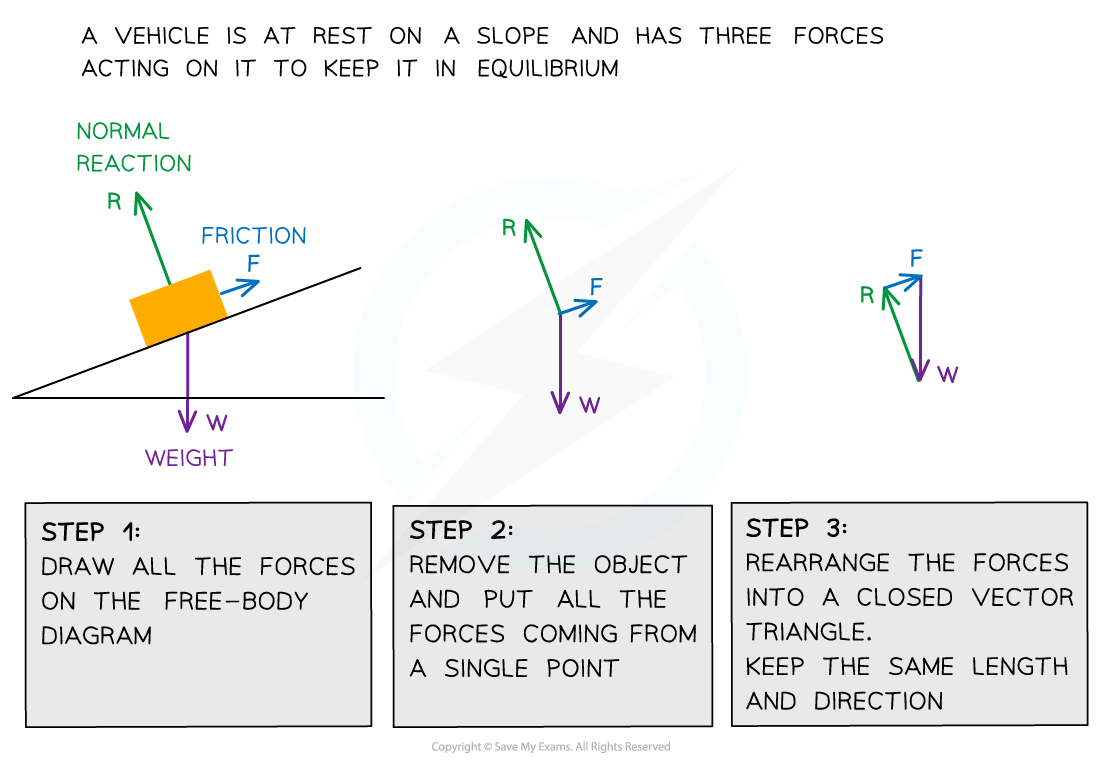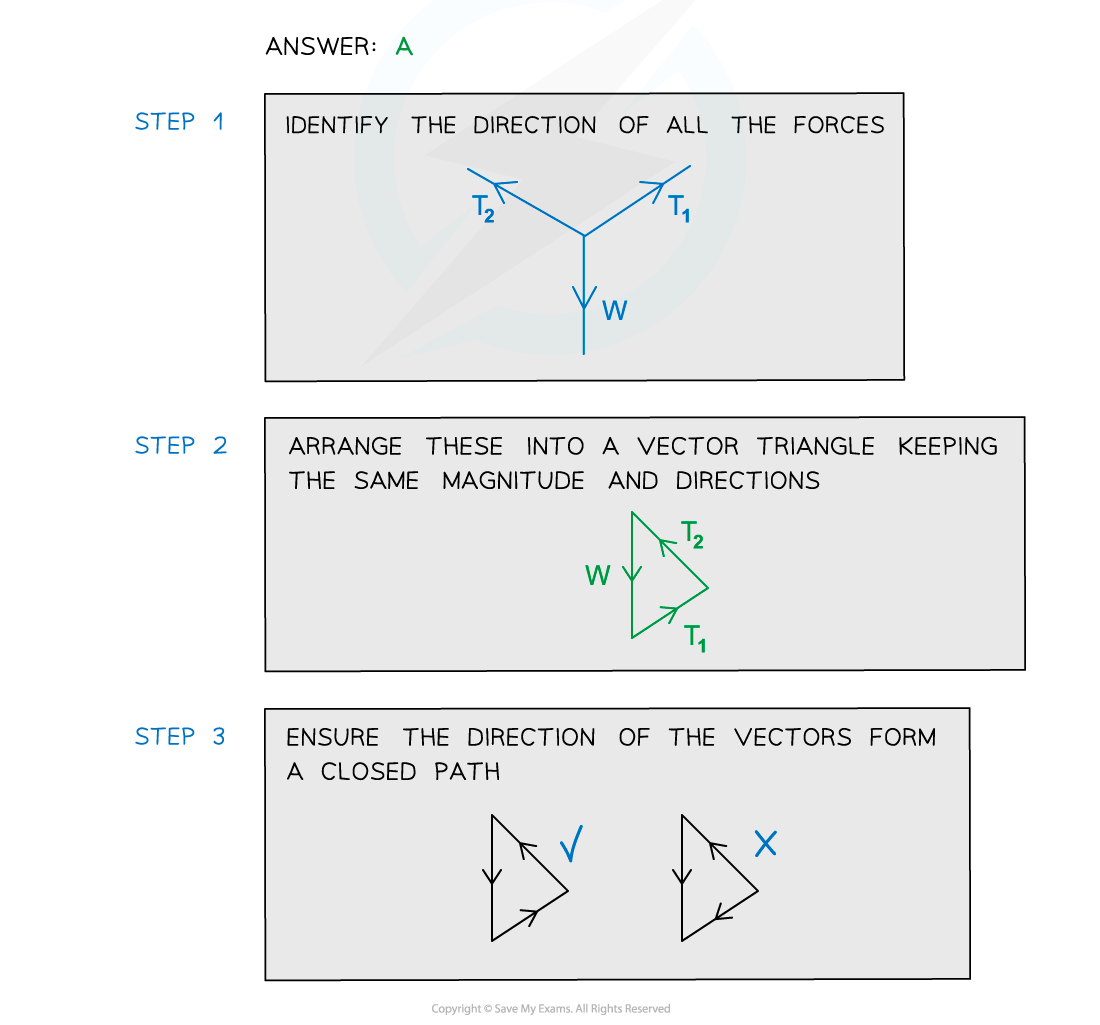Combining Vectors (OCR A Level Physics) : Revision Note
Combining Vectors
Vectors are represented by an arrow
The arrowhead indicates the direction of the vector
The length of the arrow represents the magnitude
Vectors can be combined by adding or subtracting them to produce the resultant vector
The resultant vector is sometimes known as the ‘net’ vector (eg. the net force)
There are two methods that can be used to add vectors
Calculation – if the vectors are perpendicular
Scale drawing – if the vectors are not perpendicular
Vector Calculation
Vector calculations will be limited to two vectors at right angles
This means the combined vectors produce a right-angled triangle and the magnitude (length) of the resultant vector is found using Pythagoras’ theorem

The magnitude of the resultant vector is found by using Pythagoras’ Theorem
The direction of the resultant vector is found from the angle it makes with the horizontal or vertical
The question should imply which angle it is referring to (ie. Calculate the angle from the x-axis)
Calculating the angle of this resultant vector from the horizontal or vertical can be done using trigonometry
Either the sine, cosine or tangent formula can be used depending on which vector magnitudes are calculated

The direction of vectors is found by using trigonometry
Scale Drawing
When two vectors are not at right angles, the resultant vector can be calculated using a scale drawing
Step 1: Link the vectors head-to-tail if they aren’t already
Step 2: Draw the resultant vector using the triangle or parallelogram method
Step 3: Measure the length of the resultant vector using a ruler
Step 4: Measure the angle of the resultant vector (from North if it is a bearing) using a protractor

A scale drawing of two vector additions. The magnitude of resultant vector R is found using a rule and its direction is found using a protractor
Note that with scale drawings, a scale may be given for the diagram such as 1 cm = 1 km since only limited lengths can be measured using a ruler
The final answer is always converted back to the units needed in the diagram
Eg. For a scale of 1 cm = 2 km, a resultant vector with a length of 5 cm measured on your ruler is actually 10 km in the scenario
There are two methods that can be used to combine vectors: the triangle method and the parallelogram method
To combine vectors using the triangle method:
Step 1: link the vectors head-to-tail
Step 2: the resultant vector is formed by connecting the tail of the first vector to the head of the second vector
To combine vectors using the parallelogram method:
Step 1: link the vectors tail-to-tail
Step 2: complete the resulting parallelogram
Step 3: the resultant vector is the diagonal of the parallelogram
Vector Addition

Vector Subtraction

Worked Example
A hiker walks a distance of 6 km due east and 10 km due north. Calculate the magnitude of their displacement and its direction from the horizontal
Answer:

Examiner Tips and Tricks
Pythagoras' Theorem and trigonometry are consistently used in vector addition, so make sure you're fully confident with the maths here!
Combining Vectors with a Vector Triangle
Coplanar forces can be represented by the resultant of any two vector triangles
Forces are in equilibrium if an object is either
At rest
Moving at constant velocity
In equilibrium, coplanar forces are represented by closed vector triangles
The vectors, when joined together, form a closed path
The most common forces on objects are
Weight
Normal reaction force
Tension (from cords and strings)
Friction
The forces on a body in equilibrium are demonstrated below:

Three forces on an object in equilibrium form a closed vector triangle
Worked Example
A weight hangs in equilibrium from a cable at point X. The tensions in the cables are T1 and T2 as shown.

Which diagram correctly represents the forces acting at point X?


Examiner Tips and Tricks
The diagrams in exam questions about this topic tend to be drawn to scale, so make sure you have a ruler handy!

You've read 0 of your 5 free revision notes this week
Sign up now. It’s free!
Did this page help you?
